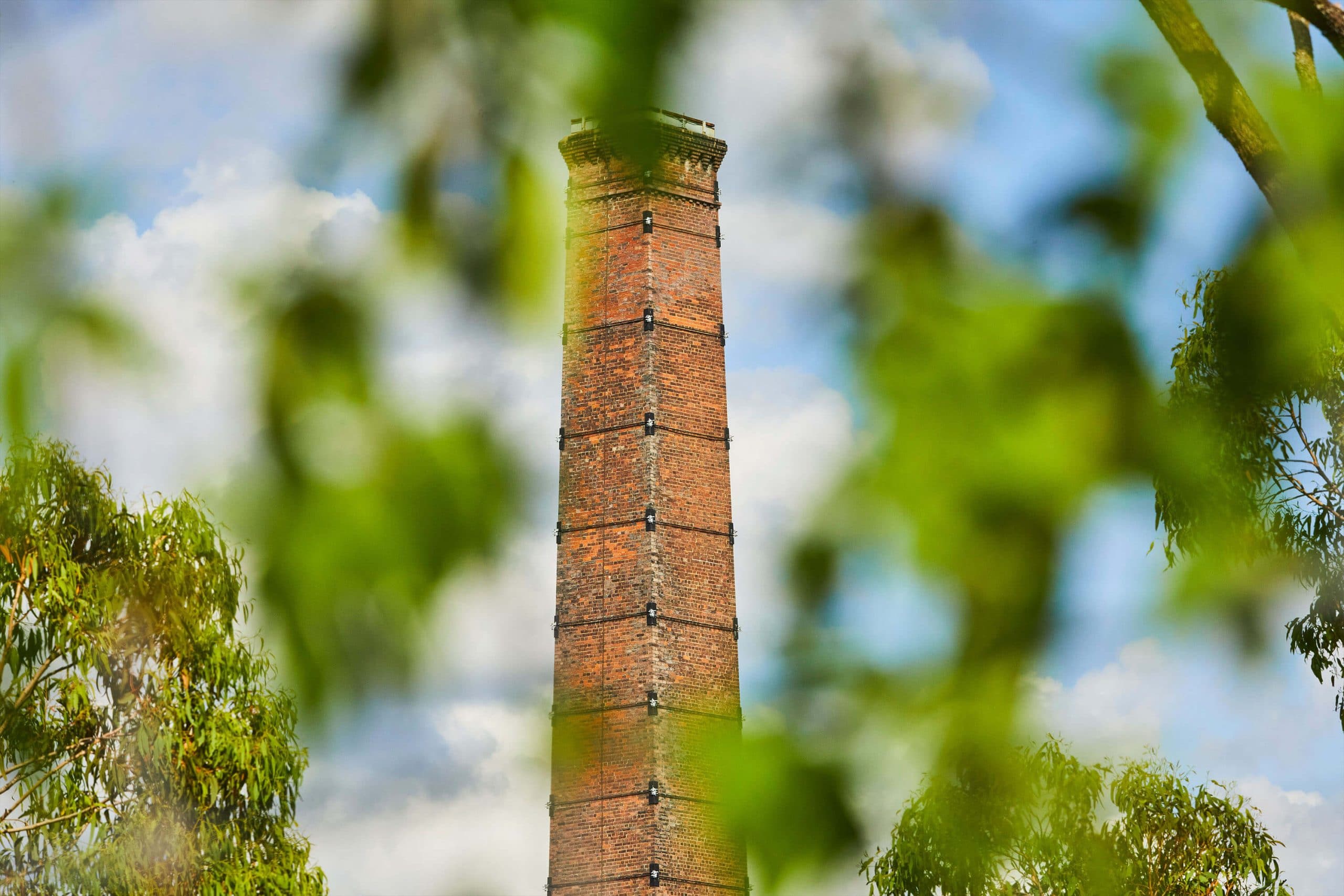Rich history to be preserved

Soaring 50 metres into the air, the towering Newmarket Brickworks Chimney is a potent reminder of an important chapter in inner north Brisbane’s rich history.
All that remains of a once thriving brick manufacturing business, the chimney still stands out as a local icon.
Constructed in 1912 when Alderley and Newmarket were still largely rural areas on the outskirts of Brisbane, the centrepiece stack was at the forefront of technology at the fledgling Brisbane Brick and Builders Supply Company.
More than 100 years on, CDL Australia’s landmark Brickworks Park revitalisation project will incorporate the chimney as a focal point of a vibrant new residential precinct, celebrating the site’s past and preserving it for future generations.
This is the story of Newmarket Brickworks Chimney.
Laying the foundation for an icon
Bricks have been part of Queensland’s construction industry since the very start, stretching back to the days of the Moreton Bay penal settlement.
In 1911, when good quality bricks were in short supply, a group of Brisbane builders and architects led by an experienced builder, Aleck Anderson, set up Brisbane Brick and Builders Supply Company.
Making use of a brick firing process known as the Hoffman method, they set about mass producing bricks.
Their new chimney allowed them to operate many large kilns at the same time, and their bricks were used in some of Brisbane’s most prominent buildings, including the MLC Building at the corner of George and Adelaide streets in the City, the Coronet Flats at New Farm, and residential colleges at the University of Queensland.
With Queensland essentially a “timber state’’ however, brick-making had its challenges.
Brickyards were often forced to close for periods of six months to two years to allow demand to match supply, with their premises piled high with surplus product.
After one such closure, Brisbane Brick issued new preference shares in order to fund a modernisation of the Newmarket plant.
The updated plant only stopped production briefly from then until the outbreak of World War 1.
Still going in the 1980s
While Newmarket Brickworks was still in operation right up until the 1980s, it had survived some chequered periods in between.
During World War II, its sheds, kilns and yards were used to store goods such as clothing and boots, and the company’s engineers were engaged to maintain ships as well as in other areas of defence.
With the war setting back the brick manufacturing industry significantly, the operation at Newmarket was forced to close.
A post-war housing boom, however, saw Brisbane Brick double their efforts to make up for lost time.
Bricks were in high demand, leading to the establishment of a second, larger factory at Strathpine in 1961.
By 1985, now under PGH, the Newmarket site had frontages to Alderley, Wakefield and Yarradale streets as well as Mina Parade.
In 1987, the Brickworks was demolished and the site subdivided. Kilns were demolished, along with sorting sheds and presses.
Looking to the future
Today, the chimney is a landmark recognised by people throughout Brisbane.
Visible from a range of vantage points, it rises prominently above Mina Parade, Frederick and Yarradale Streets, and is visible from Enoggera Road and Sedgley Park.
It is also on the Queensland Heritage Register due its significance as a rare, surviving example of the brick manufacturing industry in Brisbane in the early part of the 20th century.
Named after the industry that helped define the suburb a century ago, the first stage of CDL Australia’s $130 million Brickworks Park project will breathe new life into a fascinating period of Brisbane’s history.
The chimney’s role as an enduring landmark will be honoured. Adjoining public space will allow future generations to embrace it afresh as a key component of local life, while planned informational signs will educate everyone about its historical significance.